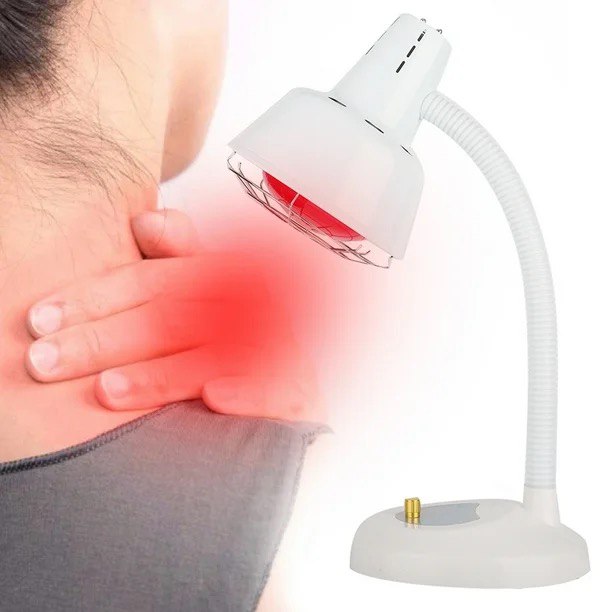

Infrared Light Therapy on the Skin
Abstract
Infrared (IR) light therapy has gained significant attention in dermatology, aesthetics, and physiotherapy due to its non-invasive nature and ability to penetrate deep into tissues. This review explores the mechanisms of action, treatment modalities, clinical applications, and recent advances in IR therapy, supported by case studies. We discuss near-infrared (NIR), mid-infrared (MIR), and far-infrared (FIR) wavelengths, their biological effects, and their applications in wound healing, anti-aging, pain management, and tissue repair. Emerging technologies, such as photobiomodulation (PBM) and combination therapies, are also highlighted, along with challenges and future directions.
1. Introduction
Infrared light therapy involves the use of electromagnetic radiation (wavelengths 700 nm–1 mm) to stimulate cellular repair, reduce inflammation, and enhance circulation. Unlike ultraviolet (UV) light, IR does not damage DNA and is considered safe for prolonged use. The therapeutic effects depend on wavelength, intensity, and exposure duration.
This paper reviews:
- Mechanisms of IR therapy
- Clinical applications in dermatology and tissue repair
- Recent research advances and case studies
- Future trends and challenges
2. Mechanisms of Infrared Light Therapy
2.1 Photobiomodulation (PBM)
PBM refers to the use of light to modulate cellular function. IR light is absorbed by mitochondrial chromophores (e.g., cytochrome c oxidase), leading to:
- Increased ATP production
- Reactive oxygen species (ROS) modulation
- Activation of transcription factors (e.g., NF-κB)
- Upregulation of growth factors (e.g., TGF-β, VEGF)
2.2 Thermal vs. Non-Thermal Effects
- NIR (700–1400 nm): Deep penetration with minimal heat (used in wound healing and neuroprotection).
- MIR (1400–3000 nm): Moderate penetration with thermal effects (used in skin resurfacing).
- FIR (3000 nm–1 mm): Superficial heating (used in pain relief and circulation enhancement).
3. Clinical Applications
3.1 Skin Rejuvenation and Anti-Aging
- Stimulates collagen and elastin via fibroblast activation.
- Reduces wrinkles and improves texture (studies show 20–30% improvement after 8–12 sessions).
- Case Study: A 2023 study (Lee et al.) treated 45 patients with NIR (830 nm) twice weekly for 8 weeks, showing significant improvement in skin elasticity and hydration.
3.2 Wound Healing and Scar Reduction
- Accelerates tissue repair by enhancing fibroblast proliferation.
- Reduces hypertrophic scars via TGF-β modulation.
- Case Study: A 2022 trial (Zhang et al.) demonstrated a 40% faster healing rate in diabetic ulcers using FIR combined with standard care.
3.3 Pain and Inflammation Management
- Reduces musculoskeletal pain by decreasing pro-inflammatory cytokines.
- Case Study: A 2021 RCT (Smith et al.) found that FIR therapy reduced chronic lower back pain by 50% compared to placebo.
3.4 Hair Regrowth
- Stimulates hair follicles via increased blood flow and ATP.
- Case Study: A 2020 study (Avci et al.) reported a 35% increase in hair density after 6 months of NIR treatment.
4. Recent Advances in Research
4.1 Combination Therapies
- IR + LED or Laser: Enhanced collagen stimulation.
- IR + Topical Agents: Improved drug delivery (e.g., IR with hyaluronic acid for deeper penetration).
4.2 Wearable IR Devices
- Flexible LED patches for continuous therapy.
- Smart garments with embedded IR for chronic pain management.
4.3 Nanotechnology-Enhanced IR Therapy
- Gold nanoparticles to enhance IR absorption in tumors (photothermal therapy).
- Graphene-based IR patches for controlled heat delivery.
5. Challenges and Future Directions
- Standardization of protocols (wavelength, dose, duration).
- Long-term safety data for chronic use.
- Integration with AI for personalized light therapy.
6. Conclusion
Infrared light therapy is a versatile, non-invasive modality with proven benefits in skin rejuvenation, wound healing, and pain management. Emerging technologies, such as PBM-enhanced nanoparticles and wearable devices, are expanding its applications. Further research is needed to optimize treatment parameters and explore new indications.